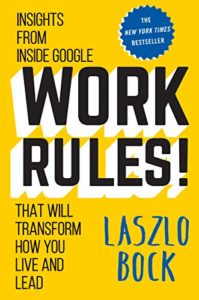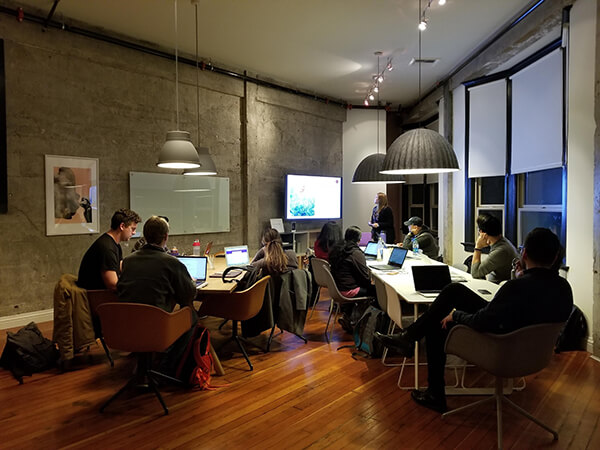
Developing a winning team is crucial for an organization or company to reach its goals. Craig Phifer, PT, the CEO of Rehabilitation and Performance Institute of Evansville, IN has put systems, rubrics, and filters in place to REALLY hone in on the successful characteristics and traits of the top performers in his company. Plus, his company’s focus has been on providing his team the autonomy and support to pursue their individual dreams. Putting these two focuses together has allowed RPI to create a culture of aligned individuals looking to significantly affect their community – and they’ve done that! They’ve grown to five clinics in three years and will continue to grow, considering the incredible team members they are developing to take more responsibilities. Plenty of insight in this episode! Get your pen and paper handy.
—
Listen to the podcast here:
Keys To Developing A Winning Team with Craig Phifer, PT
I’ve got Craig Phifer out of Evansville, Indiana, CEO of Rehabilitation & Performance Institute. I was going to talk to Craig about an article that he wrote in Impact Magazine entitled Assembling Your Winning Team. My initial thoughts, and I was mistaken, that he was developing a leadership team, but he was talking about assembling a winning team and a culture throughout the company. The reason why I’m excited to bring him onto the show is because the things that they’ve done to filter, hire and train have developed and refined their culture to create one autonomy for their providers, of stability and purpose for every hire that’s in their practice. They’ve grown to five clinics over the last few years. I’m excited to bring in some of his successful actions and share those things with you. Craig does an awesome job in explaining things. There’s a lot of stuff that was like, “That would have been great if we did that. I hope everyone’s reading to this.” There are plenty of things that you can do within your own clinics to take advantage of what Craig shares with us.
—
I’ve got Craig Phifer, Owner and CEO of Rehabilitation & Performance Institute out of Evansville, Indiana. Thanks for coming on, Craig. I appreciate it.
Thanks for having me, Nathan. I appreciate it.
I recognize Craig’s article in Impact Magazine about assessing a winning team and I think that’s such a vital part of the growth of any clinic, especially if you’re looking into multiple clinics, if you’re looking to free yourself from some of the day-to-day tasks as an owner, so you can become that leader. It helps to start creating a culture and an environment that’s not solely dependent upon you. First of all, I want to get into your story, Craig. Why don’t you tell us a little bit about your professional path and what got you to where you are?
Years ago, we started RPI. Prior to that, I had been running an office for a large orthopedic practice, transitioned into doing it on our own and started with the idea of things weren’t heading down a great path for PTs and clinicians. We were starting to sense a lot of those classmates you would talk to who’s the smartest people in the room. They’re great and you think, “That person’s going to go out and they’re going to be awesome. They’re going to crush it.” You talk to them about two years in and they’re starting to talk about like, “I’m not sure I want to be a PT anymore. I want to get out of this. I’m trying to find something else. I’m trying to do something different or something nonclinical.” It’s like, “You’re so much smarter than I am. You are the person at PT school who I thought was going to be out there doing amazing things. I’d be reading all about you now. Here we are and the profession is beating you down two years in.”
When we started RPI, the idea was how do we put clinicians in the best possible position to succeed? How do we strip away all the things that don’t matter, that we spend time and money and attention on? Can we take those away and focus on the stuff that matters, that puts clinicians in a great position to deliver great results for their patients? We’re still searching for that every day. We’re still trying to make changes and tweaks. I think we’ve done a lot right. We’ve also found out we’ve done a lot wrong, but a few years in and we have five offices in the region and it’s going well.
Congratulations, that’s awesome. It sounds like you’ve developed a model where you’re the owner and CEO, but you also have some partners in some of the other practices.
It's hard to change a community in a meaningful way when you're not living in it and when you're not involved. Click To TweetOur company has nine owners in total. What we’ve done is you have all these people who made a personal investment in the company without making a financial investment in it. We got to a point where we thought you can’t expect as an owner for somebody to put the same amount of blood, sweat and tears into it as you have. When you have these people who do, you need to reward them with something like that. I don’t think it necessarily has to be ownership, but we thought that was the right choice in our company was to say, “You can buy into ownership. You’re doing such amazing things. This company is successful because of you. We’re better when you’re a part of the decision-making process.”
Do these people tend to then be the clinic directors at the individual clinics or have some management responsibilities on top of their physical therapy work?
Almost everybody in our company has some management responsibility outside of physical therapy work. Some of those owners do manage an office. Some of them don’t. Some of them help refine our clinical processes and they play a role in that. We say we need 30 hours of clinical care to make the company go. That’s what pays our salaries and the bills. What we want to do is condense that 30 hours to where you have some other chunks of time you can use to do what it is that want to do, what you’ve told us you love outside of just treating patients. We have somebody, she’s wonderful and she gets our company mission well. She gets our vision and we got big enough to where it’s like, “I can’t manage the HR stuff on my own. We need somebody who’s doing that.” She took that role and has done awesome in it, much better than I was doing.
After you get to where you’re excelling and succeeding in your relationships and the care you’re providing patients, we think that takes about two years for most. We’ve had people who got to that point. One of them was less than a year and we were able to say, “You’re doing great. You’re doing phenomenally well. When you’re ready to take on something else, we’ve got things that we think you’d be great at. We need you to think about what you’d want to do outside of treating patients. We can start to make some of that happen.”
How do you assess when they’ve come to connect with patients, they’ve been able to develop relationships and see great results personally between them and the patients and professionally with their results that they’re providing?
We have two main things that we measure for every clinician in the company. We measure for every office and for the company as a whole. Definitively, I can tell you our most successful offices on every measure, and this includes financially, boil down to these two pieces. The first one is therapeutic alliance with patients because that’s such a great predictor of people dropping off or not. People dropping off in physical therapy is such a massive problem that doesn’t get nearly the attention it deserves.
When you say dropping off, are you talking about the 10% that complete their plan of care in our industry?

Yes, that is a pretty big number. That’s our primary measurement. Our second one is we have offices that are about 80% direct access. How many of your patients said, “I don’t just want to get physical therapy. I want Eric to be my physical therapist. That’s the person who’s going to help me. I trust them before they come in.” When you have created relationships to a point where your patients trust you before they ever come in the door, that’s powerful for being able to help them completing care. It helps us from a cycle of we don’t need that many new patients because they’re not dropping off as much. We don’t have to spend very much on marketing. We don’t have to spend very much in a lot of areas because our patients are staying. If somebody is successful and a lot of their patients, request them not just coming in for physical therapy, but request you and then our measurements of therapeutic alliance, if you’re succeeding in those two areas, I can tell you everything else was going to be good.
This isn’t the topic, but I love how you guys are doing things. I want to learn a little bit more. The situation in which maybe they ask for Eric before even coming into therapy, is this because a prior patient of Eric’s has referred a friend or family member to Eric?
Yes, that’s one of the big ones. The other one is community involvement on an individual level. We want to put people in a position where they’re living, working, playing in the community they’re in or from. If somebody has to commute an hour to work, it’s hard for them to be actively involved in that community. Not that they can’t do a great job, but it’s hard to change that community in a meaningful way when you’re also not living in it and when you’re not involved. I would say about half of that comes from community involvement. It’s got to be something you genuinely enjoy being involved in. We don’t want anybody to go out and say, “I’m going to join this running group even though I hate running because I know a lot of runners get hurt and need PT.” That’s the wrong reason to be there and it doesn’t work. It needs to be something you love doing anyway. A lot of people are being part of their church. For some people, it’s being active in running groups. For some people, it’s helping coach youth sports.
Your therapists seemingly from the get-go, as soon as they come on, there’s an expectation that they’re going to do some outside involvement or promotion. I wouldn’t call it marketing, but they’re going to be involved in the community such that they can find ways in which they can help.
Part of our hiring process is that we are looking for people who have already shown and have already demonstrated that they like being active in the community and they like doing things like that. It doesn’t feel like work to them. It’s something they would do no matter what they were doing for our profession. We think that those are the people who change the health of communities, people who are out there working in it and interacting in that community.
That’s part of your interview process. It’s like, “What kind of community activity are you in? What kind of groups are you involved with?” That’s one of your main criteria for joining you.
When we talk about defining who is successful in your organization, the people who are the most successful for us, to a person or all people who enjoy being out there in the community. They don’t even have to be extroverts necessarily. We have a lot of introverted people who have things they like to do in the community or in their particular group. There’s no right or wrong way to do it. It’s like, “We don’t have anybody involved in soccer in this community. I need you to like soccer and go out there and get involved.” It only works if it’s something people want to do anyway.
We're all pretty overstimulated and it's created this need for flexibility. Click To TweetThose introverted people, they’re not necessarily introverted when they’re in a comfortable environment. When they’re part of that group, maybe they’re introverted but they like CrossFit. There’s their tie to a community. There’s a group that they can be a part of and benefit from. I had an interview with Sturdy McKee out of San Francisco. One of their criteria for bringing people on was they would ask people if they participated in team sports anytime during their lifetime. If you said no to that, they wouldn’t hire you on. I bring that up because there are some things that are outside of the box and you alluded to this in your article in Impact Magazine about assembling a winning team. There are some things that you’re looking for. There are traits, characteristics, even personality types that you want to bring on and create a winning team and sustain the proper culture in your company. You get down to, “We’re hiring for this person, a physical therapist. They’re going to be actively involved in their community. If they’re not actively involved in their community, that might be a red flag. We might not necessarily hire them.” Would you go that far?
Yes. Some of the mistakes we’ve made through the process is one, initially, we asked people about their desire be involved. Everybody can give you a good answer in an interview. PTs are smart people who are great test-takers. They’ve exhibited that throughout the doctoral training they have. People can give you a good answer to a question. We’ve had to start to look at less about the answers to the questions that we ask but more, “What have you done? What are you currently doing? What are the questions you’re asking us?” That tells us more about what you’re interested in and what you’re trying to achieve, then your answers to the questions we ask you.
Say the community involvement, do you take that down to even some of your administrative personnel whether the front desk person or an aid? Do you take it that far?
Everybody, yes. It’s an important part for every role. There are certain things that we look at are traits where somebody might be successful as a PT, versus what they’d be successful as a clinic director or clinic manager are different. The same thing for somebody who is working in a front-office role. Some of those traits are different, but there’s a lot of overlap and community involvement is some of the overlap.
I can see where community involvement in your situation has bred a culture and an environment within your companies from what it seems. When you get down to job descriptions, then there are different traits that you’re looking for. In your article, you talked about rubric development. There are certain things are looking for, but there are also certain things that might come up as red flags. You mentioned yellow flag as well that you want to make sure you steer away from. Is that something that you’ve developed over time or did you sit down ahead of time and say, “These are the people that are super successful. What do they have that makes them successful?” How did you develop a rubric like that for the different positions in the company?
One of my favorite books that I stole this from is Work Rules! by Laszlo Bock. He used to be the head of people development at Google. It’s a fantastic book where he says, “You’ve got to put your top people under a microscope.” Your culture is almost like a living, breathing thing and it’s changing as the people in your organization grow and develop. If your culture stays stagnant, that’s probably not great. Your culture is changing, developing a little bit. Who was succeeding a year ago are the same people still succeeding now. Study those people. What we did is we put people through five whys, “Why is Eric so successful? Eric’s patients seem to like him, but why do Eric’s patients seem to like him?” You keep going down the road until you find the traits of that person and compare that to three, four or five other people who are doing a phenomenal job for you. You’ve got a pretty good handle on those. These are the things that make somebody successful in our culture and also change with us as we grow and develop. They’re the ones who have kept up through the process.
Are these typically people that have been with you a long time or are you seeing some of these most predictive people even in your recent hires?

We had some in very recent hires that have come on and picked it up better than I ever could have imagined.
Do you attribute that to your interview process? Do you attribute it to looking for those certain traits?
I think it helps. I’d be lying if I didn’t say that we nail it every time and that luck wasn’t a part of it too. We’ve built a culture where in our area we’ve become well-known of if you can get a job there, that’s where you want to be. It’s going to work outpatient or orthopedics. We put ourselves in a good position of having a lot of people to choose from. That’s been incredibly helpful.
I’m sure the people you’ve brought on that have been successful and enjoy being there will attract people. They’ve got friends either from PT school or in the area and they’re like, “I can get you on.” These are like people and they’re going to have similar traits. There’s a huge advantage to that.
Some of our best hires have come from somebody saying like, “I know we don’t have an opening right now and we’re not exactly trying to hire somebody. I’ve got somebody who I think is going to be phenomenal.” Everybody at our team is cognizant of what we’re looking for and what somebody needs to be successful through us. There are people that said, “That’s a good friend of mine. However, I don’t think they’re a great fit here.” Somebody who said, “We weren’t that close in PT school, but I know them and I think they’re going to do awesome here. They’re going to be great. I think we’re going to be great friends even though I don’t know them that well now.”
Having your employees be part of that filtered process is amazing and powerful.
It made the recruiting so much better. From the first time we were trying to hire somebody, we had to go through five, six, seven different channels to get one or two applicants. It was hard. We got to thinking like, “If it’s going to be this hard to hire a PT every time, what are we doing here?” As we started to get our name out a little bit more and our own people started to feel like, “We’re onto something here. This is going great.” I don’t want my friends to work here. You should leave where you’re at and move here and come work. That’s been phenomenal for us.
20% of your time should be spent on something that you love. Click To TweetThat’s a great position to be in. Are you doing any recruiting work in some of those surrounding PT schools as well?
We have people who are quite involved in local PT schools, a lot of lectures and a lot of students. We value the clinical learning process. Anytime some of the local PT schools want to send us somebody, the answer is yes. We just got to figure out where to best put them so that everybody is successful.
Have you ever hired a PT without necessarily having an opening because you knew they were the right fit?
I’ve got a few people who crushed it for us. We knew them beforehand. They did great in the interview. We knew they were somebody who are going to be able to drive some of their own patient care volume. That came from us saying, “We know that fewer than 10% of people who need PT get it.” There’s a market out there that if we’re able to reach the people that we can help, our PTs have the ability to drive their own schedule. When we find somebody who we think can do that, we’ll hire them no matter what.
A lot of people will consider that a leap of faith. You talk about this in your article about giving them some autonomy. I like how you used the word autonomy and not necessarily responsibility. You haven’t said that they have a responsibility to generate their own patients. You more talked about how they’re in control of their own schedule. I’m sure you have some expectations, but it doesn’t seem like it’s coming from top-down. It seems like somehow you developed the culture that allows them to be internally driven.
That was the exact thought process when we started. The big things that make something go are autonomy, mastery and purpose. If we can drive those things and put people in a system where we have autonomy, I think part of autonomy is flexibility. Can we give people some flexibility and schedules and how we get things done? If we just tell them, “This is what we’re going for, this is what we need,” PTs are hardworking people. It’s hard to get into PT school in the first place. It’s hard to finish PT school. Once you’ve finished PT school, it’s hard to pass your board exam. We’re picking from a group of people who are smart, driven and motivated. We need to give them the platform to let all those qualities shine. That’s what we’re attempting to do.
From an owner’s perspective, from my past experience, when you talk about a scenario like you’re in where a lot of your PTs drive their own patients and patient load, a lot of PTs that I come across almost seems like that’s the company’s responsibility to market the doctors, talk to the people and get out in the community. If you want me to treat patients, I’ll do that all day long. What I’m finding out is that you’ve filtered those types of people out.
That type of person no doubt exists. We’ve hired that person before and it’s not that they haven’t been okay. They haven’t excelled in our system. I understand anybody who wants their career to go like that. Not everybody wants to work in our system where you’re probably only going to be successful unless you want to do some of those things. Filtering some of those people out through the interview process, but also as we bring somebody on, we want to help them find the reason they got into this in the first place. PT is a profession. We’re incredibly autonomous people probably to a fault. Most people want to help others when you show them that this is your best route. If you want to help people, this is absolutely the best way to do it. You can’t only have them in your life for 45 minutes twice a week or whatever it may be, depending on where you work and never see them again or never see anybody around them that you’re going to make a change. You might be the best clinician ever, but you’re still not going to make a change on bigger level.
You’re promoting your physical therapists to make a difference outside of the clinic. It extends beyond the clinic, extends out into the community. I love that you brought up the fact that we only address 10% of the people that actually need us that have musculoskeletal injuries because a lot of times we think there’s so much competition, but when we’re talking about competition, it’s for the 10%, it’s 90% out there. We could be such smaller fish in a bigger pond if we could reach that other 90%. That’s a huge difference. You talked about getting rid of some of the things that lead to the two-year-old PT to be frustrated and looking for something else. Maybe I’m putting words in your mouth but it leads to burnout essentially. What are some of those things that you’ve pulled away from your therapist to help them be more engaged, involved and minimize possible burnout?

The first thing we wanted to address with our therapist is to put them in a situation where they were only having to treat with one person at a time. PT is realized when you’re seeing two, three, four people at once, no one is getting the best of you. We’re such a caring, altruistic profession people by nature that I don’t think anybody can internally deal with that very well. They either need to shut their own professional life off from everything else if they’re doing that because they have this internal feeling of like, “I know I could be doing better for them. My system doesn’t allow me to.” Our first part was if we don’t spend money on stuff that doesn’t matter. We spend money on your relationship with that person and the things that allow you to develop a relationship with that person. We want to get people to where they feel like they’re making a difference because they are. We give them that element of purpose.
The second thing is I think we’re all pretty overstimulated and it’s created this need for flexibility where there are times where we want to work, there are times where we want to get away from work. I will always say that if we have a job at our company that a working mother can’t do, then we don’t have a job that’s two jobs. My wife’s a PT. She’s a professor in the local PT school. If she can’t do a job within our company, I haven’t provided the flexibility of somebody who’s going to be great. That was our next focus of saying we need this many visits a week. We need 30 hours of patient care. You tell us how that works for your schedule. You tell us how to make that happen and you have a couple of patients in the morning cancel. That’s okay. Your schedule is your schedule. I’m not treating those people. You are. If they can’t make it in and you’re going to come in an hour-and-a-half late because your first two patients scheduled and now you’ve got something else you needed to get an oil change, that’s perfectly fine. We’ll see you when you come in.
As a past owner, I can think about some of the issues with that because there has to be an expectation as far as productivity. You talked about that in your article about how you create measurements or statistics with your employees. Tell me a little bit about that and how you maintain productivity in your situation.
For us, we tell everybody before they ever start. It’s the best question somebody who’s interviewing for a job in PT should ask an employer is, “How do you measure if I’m successful?” Because oftentimes the answer just ends up being more when you don’t know if you go into a place, “Am I doing well? Just see a few more patients, build a few more units and you’ll be good.” We tell everybody before they come on, this is exactly what we’re looking for from a productivity standpoint. We put that piece aside, “Here’s how we find it best to get those things without running yourself into the ground because nobody needs that. That’s not good for you, for us, for your patients. Here’s how you get it that without reaching those burnout levels.” Once people figure out, “Here’s how I get those things. Here’s how I do a good job. I find out I’ve got a lot more energy. I’ve got something else I want to take on.” Let’s talk about your other goals. We have a professional development period, our pyramid for people where they’re able to say, “Here’s the ultimate goal that I want and here’s a couple that are leading up to that.” We’ll talk with everybody monthly about, “What are you doing to get toward that? What can we help you with? What kind of obstacles can we help you remove to make that happen?”
What are some of the statistics that you measure your providers by? Is it visits per week or some other statistic? You don’t have to share numbers, but what are the KPIs you use?
We talked about the big two and if those are going, then I know pretty well everything else is probably going to be good. From a pure productivity measurement, it’s visits per month. It is the timeframe we look at. From that, we have a unit per visit. We have a range. It’s going to be slightly different depending on your particular office. Those are the two things that are pure productivity. I think it’s good for everybody to understand before they’re going in that if you were working on a line and you needed to put out ten widgets in your shift to make ends meet, then you know, “I need to make ten widgets to make the ends meet.” For us, that’s how we make money. That’s how we continue this. That’s how we help people, “Here’s what we need financially to make it everything else go so we continue to help people.”
Where did you come up with the 30 hours per week of treating? Did you work backwards from what you need as far as revenues? How did you come up with that number?
Everybody tends to gravitate toward the person teaching them and leading them. Click To TweetWe pulled it out of the 80/20 rule. We want 20% of your time to be spent on something that you love. We started saying, “Can we make that happen? What do we do to it to drive that?” Then we worked backwards, “If that’s what we need, here’s about how much we’re going to make per visit in our area.” We knew that. “If we can generate that much revenue, here’s the bucket we have to spend on.” Anything that goes outside of that, then we’ve got to start saying, “Here’s what we don’t need. Let’s pull that out.” We’re more of a destination place. We don’t need to spend astronomical amounts on storefront and being the most visible location. Most of our patients drive past somewhere else that offers physical therapy to get to us. We’re very comfortable with that because it means we don’t spend a lot of money on square footage. We spend a lot of money on the relationship with our patients.
I love how you guys have set up. This is something that you’ve probably developed over time is your interview process. You seem to have nailed down. It’s pretty close to a solid, finished product. I’ve talked about this with other guests and consultants. Bringing up the productivity expectations at the very forefront is huge. Leaving that as something that’s part of their training is wrong. They need to know exactly what they’re getting into and you need to be upfront about what the expectations are. I think that goes a long way. I love how you talk about what is their professional path. Some of them might want to be lifelong clinicians and that’s okay. You might have a position for that. There are some people who are like, “If I’m doing these ten years from now, I’m going to shoot myself.” You’ve offered an opportunity to show them that there is a path for development. I think that’s huge as well because you then are aligning what they want with what you can provide and show them a path to do that. That gets a lot of buy-in into the culture.
We’ve developed a couple of people right out of our organization. Somebody might say like, “That stung you. They developed as an individual faster than you are as a company that they got this great opportunity somewhere else that you can provide them.” It’s like, “I think that’s awesome.” We’re able to provide the kind of place where people can grow and develop. If you’re developing yourself so fast, because we as a company, we have everybody. We’re growing as a company. We’re doing lots of new things and lots of exciting ventures coming up. If you’re even outpacing us to where we can’t provide you the opportunity, good for you. That’s phenomenal. I’m glad that happened and I’d be happy to help you do whatever you want to do.
I loved reading your article about assessing a winning team. You developed a team, not just the leadership team. That’s how I went into this, helping people recognize what it takes to develop a leadership team. You’re talking about a team from the bottom up. You’re talking about developing a team and growing than you’re leaders from the get-go, and you’ve provided a professional track for them to do that. There’s some development in place. There are certain levels that you address on a month-to-month basis, which is very cool as well. You’re having one-on-one meetings with them to do that. That’s all amazing. When it gets to leadership, what are some of the things that you might have them do? Are there some tests that you take them through? What do they need to do in order to become a leader in your company?
We have been developing that path to different leadership. The qualities that we found internally people who become most successful in that role, one of the big ones is vulnerability. That person is able to share, “This is where I’ve failed doing that or this is something that I have trouble with.” It puts everybody at ease when you realize that this person I look up to and that I’m following are not perfect either. As far as qualities go, that’s the quality that we’ve tried to develop culturally within our organization. We see our leaders have high levels of that.
You’re that from an observational point of view, I’m assuming.
We’ve noticed that those are the people that almost attract others. They might be a staff physical therapist in their role and we might have three other staff physical therapist there. Everybody tends to gravitate toward that person teaching them and leading them. A lot of times it’s the person who will sit there and they’re talking after work about a patient they’re struggling with and the person’s like, “That’s tough. I don’t even know what’s going on. There are so many directions you can go in. I’m stumped.” That person is the one we’re finding that other people naturally start to follow.

If they’re interested in leadership, do you tell them, “There are books that you should read,” or do you give them small tasks to see how well they handle management?
Both of those things. We have almost a progressive reading list of things. The first part of it is leading yourself. If you don’t know you, you could argue that very few people actually know what they want, why they want it, how those things developed in their own life. If you can know you, that’s where we want you to start. The book I love for that, that we recommend is The Subtle Art of Not Giving a F*ck by Mark Manson. I think it’s a phenomenal book. The title scares people off because you’re like, “I do want to care. I don’t want to learn how not to care.” It’s more about teaching you how not to care about things that don’t matter and finding out what does. That’s our initial reading list book. We find that once people understand themselves well, it becomes so much easier to lead others.
You said a lot of people in your organization have some responsibility. Are you talking even down to the physical therapy aids if you have them or even the newest physical therapist? Did they have some responsibility?
For the most part, we don’t put other things onto people for the first six months to a year. We have had people who jump into things right away and show a natural proclivity too like, “I enjoy doing that. I want to do it.” We’re like, “You do your thing.” We want people their first couple of years to be about honing in clinical skills and working with their mentor through that process. Developing a system and developing their own pieces of it where they know when they’re successful with a patient, when they’re not successful with the patient, where they went wrong, what went right and focus on that element of expertise. As you get that, we want you to start taking on some other things.
It sounds like that you’ve systematized things that there’s not a lot of subjective recognition of how well these people are progressing. You’ve got a system in place for the training and also for their assessment.
We’ve got it up about as objective as it can be. There are certain things that I don’t feel can be fully objective measurements. It’s about as much though as it can be.
You can only go so far, but if you can define those traits of the successful people, what they’re doing and how they’re acting and list those things out, then it gives you a blueprint for how the next person’s going to be. It can change. There can be some modifications here and there and not everybody’s the same, but you have a general idea of what makes them successful and people can follow that. That makes things a lot easier, especially on the owners when it comes to training up the next person.
Once people understand themselves well, it becomes so much easier to lead others. Click To TweetWe can say we’ve got a system around you that you don’t have to think about all these little energy-draining elements throughout the day. Our job is to make sure that all that’s done for you and that you can focus your attention on the task at hand, which for a lot of people is going to be that patient in front of you. If we can do that, we built a good system.
What’s your meeting schedule like? Whether it’s in the individual clinics, with your leadership team and with you and the owners. What is your meeting rhythm like?
We have quarterly ownership meetings and monthly leadership team meetings. Every clinic director meets with every person on his or her team once a month as well. We find that when it’s too much more frequently than that, people get by meeting. If it goes too much longer than that, we have a lot of people who feel like they’re being left out of the loop on what’s going on because we have so many things that we’re trying to develop and move forward.
The clinics themselves outside of the director and their team members, do they have typical staff meetings once a month as well?
Yes, we try to provide opportunities where we can get together as a group. Our clinics, their farthest apart are about two hours. We try to provide something at least quarterly, we’re doing something fun getting together, nothing to do with work where we can do something fun as a group and everybody can bring their kids. We found that’s a helpful element for us too.
We found that same thing. They call them quarterly town halls. They got it out of Verne Harnish’s book, Scaling Up. When they can get together, they’ll talk a little bit about values or maybe focus on one value, have some activities and get-to-know-you games. It’s huge for the culture and maintaining that and even creating it. People get a lot of buy-in from situations like that.
It has been big. It’s probably the thing that I would say we need to continue to get even better at is creating more of those opportunities, more different things that everybody wants to be a part of involved with. We don’t want anybody to feel like, “Here’s this Saturday morning where I have to go hang out with these people.” That’s something that we provide for everybody generally who wants to be involved with.

You want to invest in that because I’m sure you’re seeing the impact of it, the ROI on that, culturally speaking is huge. Craig, thanks for your time. I appreciate you expanding a little bit on the article that you wrote in Impact Magazine, Assembling Your Winning Team. You are doing a lot of things great and it shows in your growth. It’s impressive. Thanks for coming on.
Thank you for having me.
If people wanted to reach out to you, are you available on email or social media?
It’s @CraigPhifer on Twitter. That’s a great place to reach me or CraigPhifer@Gmail.com.
Thanks for coming on. I appreciate it.
Thank you.
Important Links:
- Rehabilitation & Performance Institute
- Assembling Your Winning Team
- Work Rules!
- The Subtle Art of Not Giving a F*ck
- Scaling Up
- @CraigPhifer – Twitter
- CraigPhifer@Gmail.com
About Craig Phifer, PT
 Craig Phifer, PT, MHA is the owner/CEO of Rehabilitation & Performance Institute.
Craig Phifer, PT, MHA is the owner/CEO of Rehabilitation & Performance Institute.
He is on the Editorial Board for Impact Magazine, and helps PTs start their own practice through craigphifer.com.
He can be reached at craigphifer@gmail.com and on Twitter @craigphifer.
Love the show? Subscribe, rate, review, and share!
